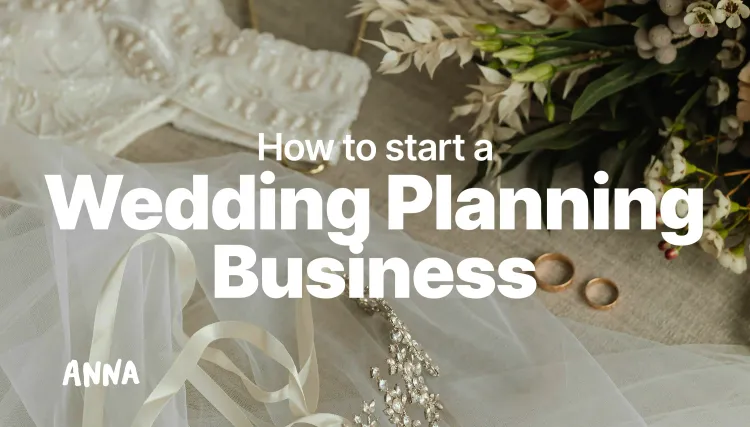Explore how to start a catering business from scratch and turn your passion for food into a flexible, rewarding career on your terms.

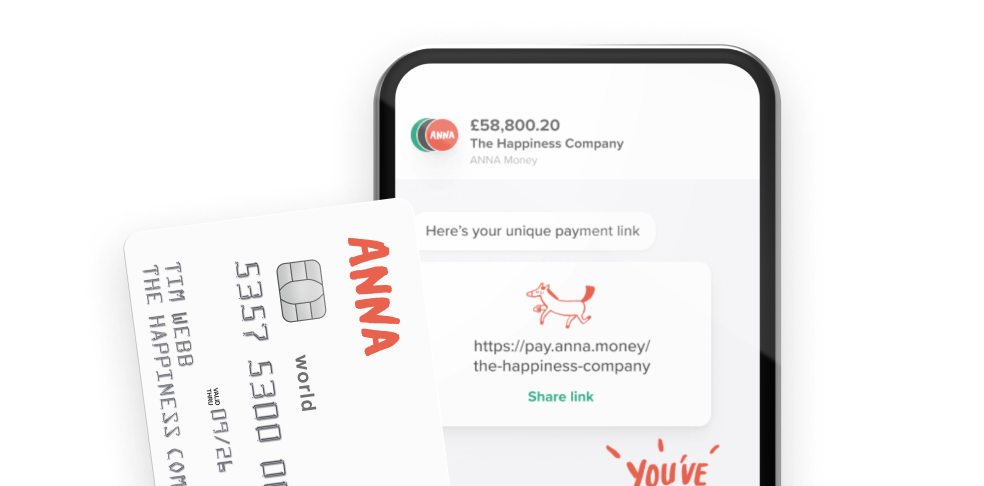
- In this article
- Understanding the market
- Top event catering trends in the UK for 2026
- Legal requirements and company setup
- Costs and finances
- Client acquisition strategy
- Operations and capabilities
- Time-saving systems and tools for catering businesses
- Tools, systems and automations
- Example: 1-year business plan snapshot
- Final tips and common mistakes
- Why ANNA works for new caterers
Not everyone wants to open a restaurant, but plenty of people still want to cook for a living. Catering is one of the few food businesses that lets you start small, work flexibly, and grow on your own terms.
From private parties to office lunches and local events, there’s steady demand for good food that shows up on time.
And clients aren’t just looking for fancy venues anymore; they want someone reliable who can deliver fresh, well-made food for real-life occasions.
If you’ve been thinking about how to start a catering business, now’s a good time to take it seriously. You don’t need a team or a shopfront. Just a kitchen, a plan, and a reason to begin. The rest of this guide walks you through exactly how to do it.
Understanding the market
Catering today spans many trends and customer niches.
Popular trends include eco-friendly and plant-based menus – for example, modern caterers increasingly feature locally sourced ingredients and zero-waste practices, and offer vegan or vegetarian options as standard.
Customers often look for unique experiences: think interactive food stations or fusion cuisine (blending world flavours), which make events stand out.
Health and sustainability are big drivers – many clients expect caterers to minimise waste, use recyclable packaging and include nutritious menu choices.
Top event catering trends in the UK for 2026
| Trend | Description & Examples |
| Globally Inspired Grazing Tables | Replacing formal dinners with curated grazing tables featuring Mediterranean mezze, antipasto, sushi stations, and international flavours. Interactive, social, and visually striking. |
| Quiet Luxury & Bespoke Experiences | Focus on refined, understated elegance: caviar carts, oyster shuckers, table-side carving, and high-end, immersive dining. Emphasises craftsmanship and exclusivity. |
| Sustainability & Local Sourcing | Eco-friendly menus with local, seasonal, and organic ingredients. Farm-to-table, zero-waste initiatives, and biodegradable packaging. |
| Plant-Based & Vegan Menus | Innovative vegan and vegetarian dishes (e.g., jackfruit sliders, vegan arancini, beetroot carpaccio). Plant-based options are mainstream and appeal to all guests. |
| Fusion & Global Cuisine | Blending culinary traditions: Indian-Mexican, sushi tacos, tikka masala burgers. Diverse, adventurous menus reflecting global influences. |
| Interactive Food & Drink Stations | DIY bars (taco, pasta, poke), live chef stations, build-your-own, and custom beverage bars. Engages guests and provides entertainment. |
| Personalised & Custom Menus | Menus tailored to guest preferences, dietary needs, and event themes. Includes bespoke canapés, signature cocktails, and even family recipes. |
| Technology Integration | Digital menus, QR code ordering, virtual tastings, and smart kitchen appliances for efficiency and customisation. |
| Immersive & Experiential Dining | Food as entertainment: theatrical presentations, edible art, Instagram-worthy plating, and multisensory experiences. |
| Comfort Food Reimagined | Classic British dishes (e.g., fish & chips, shepherd’s pie) elevated with gourmet ingredients and modern presentation. |
| Family Style & Sharing Platters | Large sharing platters, tapas, and communal dishes to foster togetherness and a relaxed, intimate atmosphere. |
| Artisanal Drinks & Mocktails | Craft mocktails, low-ABV cocktails, sustainable teas/coffees, and interactive drink stations (bubble tea, nitrogen coffee). |
| Dessert Tables & Mini Sweets | Decadent dessert tables, trio mini-desserts, and creative sweet treats as a central feature of the event. |
Who is your audience?
Different customer segments want catering for different reasons:
- Weddings and celebrations are a huge market – couples want everything from canapés to wedding breakfasts, often with plated or buffet service.
- Corporate clients (offices, conferences, business events) need reliable catering for lunches, buffets or coffee breaks.
- Private parties, social clubs, schools and charities also hire caterers for birthdays, anniversaries, festivals and fundraisers.
- Some caterers even contract with hospitals, care homes or sports venues to provide regular meals.
Each segment has its own expectations – for example, business clients may prioritise punctual service and dietary compliance, while a private party may want customised menus and friendly staff.
Is catering the right fit for you?
Underlying all this is the problem catering solves: busy hosts who don’t want to cook or organise food themselves.
A caterer takes over the entire meal experience – shopping, preparation, cooking, serving and clearing up – leaving the client free to focus on the event.
Caterers also solve food-safety and scale issues (they know how to cater for 50 or 500 people), handle different diets and allergies, and provide professional equipment and staff.
A great caterer is the answer to anyone who loves good food at an event but hates the hassle of making it themselves.
Legal requirements and company setup
Before cooking for clients, you must set up your business properly.
A key early decision is whether to operate as a sole trader or a limited company.
- A sole trader is easy and cheap to start (you just inform HMRC), but you’re personally responsible for all debts.
- A limited company offers limited liability (your personal assets are safer) and can be more tax-efficient and credible to clients and lenders.
On the other hand, a company means more admin: you must file annual accounts and confirmation statements. (For example, a home baker or single-chef food truck might start as a sole trader, whereas a catering team with investors might prefer a limited company.)
💡No matter which structure you choose, company registration is simple and fast – especially with ANNA. ANNA Money offers free same-day company formation (you can incorporate your business online in hours).
Once registered, you’ll get a UK business account straight away. If you use ANNA, the formation and account setup can happen together for a stress-free launch.
Legally, any catering business must register as a food business with your local council at least 28 days before you begin trading.
This requirement comes from the Food Safety and Hygiene (England) Regulations 2013, or the equivalent legislation in Wales, Scotland, or Northern Ireland.
Food safety inspections and hygiene requirements
Once you register, your premises may be inspected by an Environmental Health Officer (EHO) either before or soon after you begin trading.
You must also:
- Prepare a written food safety management plan, based on HACCP principles (Hazard Analysis and Critical Control Points).
- Keep clear records, such as:
- Temperature checks
- Cleaning schedules
- Supplier traceability logs
- Ensure that all staff involved in food handling have proper hygiene training (typically Level 2 Food Hygiene Certificate or higher).
Licences you might need
Depending on how and where you operate, you may need additional licences or permissions:
- Street Trading Licence: Required if you sell from a food truck or market stall. You'll need one for each council area where you operate.
- Premises Licence: Needed if you serve hot food or alcohol between 11pm and 5am, or offer dine-in services with alcohol.
- Temporary Event Notice (TEN): Required for one-off events like weddings, festivals, or pop-ups.
- Food Premises Approval: Needed if you handle high-risk food (meat, fish, dairy) at scale, especially if supplying to wholesalers, retailers, or for export.
Insurance for caterers
Insurance is essential even for small or home-based operations.
The three key types:
- Public Liability Insurance – Covers injury or property damage at events.
- Product Liability Insurance – Covers claims if someone gets sick from your food.
- Employers’ Liability Insurance – Legally required if you hire staff, even part-time.
Most caterers use a combined insurance policy that includes all three.
Typical cover levels range from £5 million to £10 million.
Costs and finances
Major startup costs include equipment and premises, licences, and initial stock.
- For instance, you’ll need pots, pans and commercial kitchen tools, which might cost £2,000–5,000 depending on quality.
- A food van or trailer (if mobile) could run £10,000–20,000 or more second-hand, whereas renting kitchen space might need a deposit of £1,000–2,000.
- Licences, council registrations and insurance can total a few hundred pounds each.
- You’ll also need cash for initial food stock, cleaning supplies and uniforms (perhaps another £500–1,000), plus marketing (a simple website, menus, maybe local ads – say £300–800).
The table below shows a rough range of startup expenses for a basic small catering business:
| Startup Item | Approx. Cost |
| Kitchen equipment | £2,000 – £5,000 |
| Vehicle or trailer | £10,000 – £20,000 |
| Licences, insurance, regs. | £500 – £1,000 |
| Premises deposit/rent | £1,000 – £2,000 |
| Initial stock & supplies | £500 – £1,000 |
| Marketing & website | £300 – £800 |
| Total (typical range) | £14,300 – £29,800 |
Ongoing running costs include ingredients (food, drink), fuel or utilities, wages (even if just a part-time helper), vehicle upkeep, marketing and replacement of equipment. These can be as low as a few hundred pounds per week for a one-person home business, or much more for larger operations.
How to price your service?
To stay profitable, most caterers aim for gross profit margins (revenue minus food costs) of around 60–70%. That usually translates into net profit margins of roughly 7–8% on total sales
(high-end events businesses can sometimes achieve 15%+).
In practice, you’ll need to price carefully: calculate all your ingredients and overhead costs, and set menu prices to cover them plus a healthy margin.
Where to find loans for your catering business?
Financing can come from several sources:
- You can start with personal savings or a small loan.
- You might also borrow on credit cards or buy some kit on finance.
✨ Government-backed schemes like the UK Start Up Loans scheme provide personal business loans up to £25,000 at a low fixed rate (6% annual interest) and include mentoring.
✨ Charitable funds or regional grants sometimes cover training or equipment, especially for innovative or green food businesses.
✨ Equity investment or crowdfunding are options if you have an ambitious project (e.g. a restaurant-grade kitchen or large food truck).
Client acquisition strategy
With the business side set up, the next big question is how to find clients. You can build customers in several ways, combining local networking with online marketing:
1. Local outreach
Start in your community:
- Let neighbours, friends and local businesses know about your new service.
- Attend wedding fairs, food markets or farmers’ markets to showcase samples and talk to potential clients.
- Partner with nearby venues (village halls, pubs, event spaces) and event planners – they often refer caterers to their clients.
- Give out flyers to offices and community centres.
- Word-of-mouth is powerful: encourage happy customers to recommend you, and consider offering a “refer-a-friend” discount to get the buzz going.
2. Online presence
- Create a simple website or Facebook page with mouthwatering photos of your food and a clear description of your services.
- List yourself on Google My Business and local directories so that people in your area find you when searching.
- Instagram can work well for showy event food or wedding spreads – posting attractive shots with hashtags (like #UKcaterer, #veganwedding, or your town name) can draw attention.
- Always include customer reviews or testimonials on your site: social proof (e.g. five-star Google reviews) builds trust and often wins new bookings.
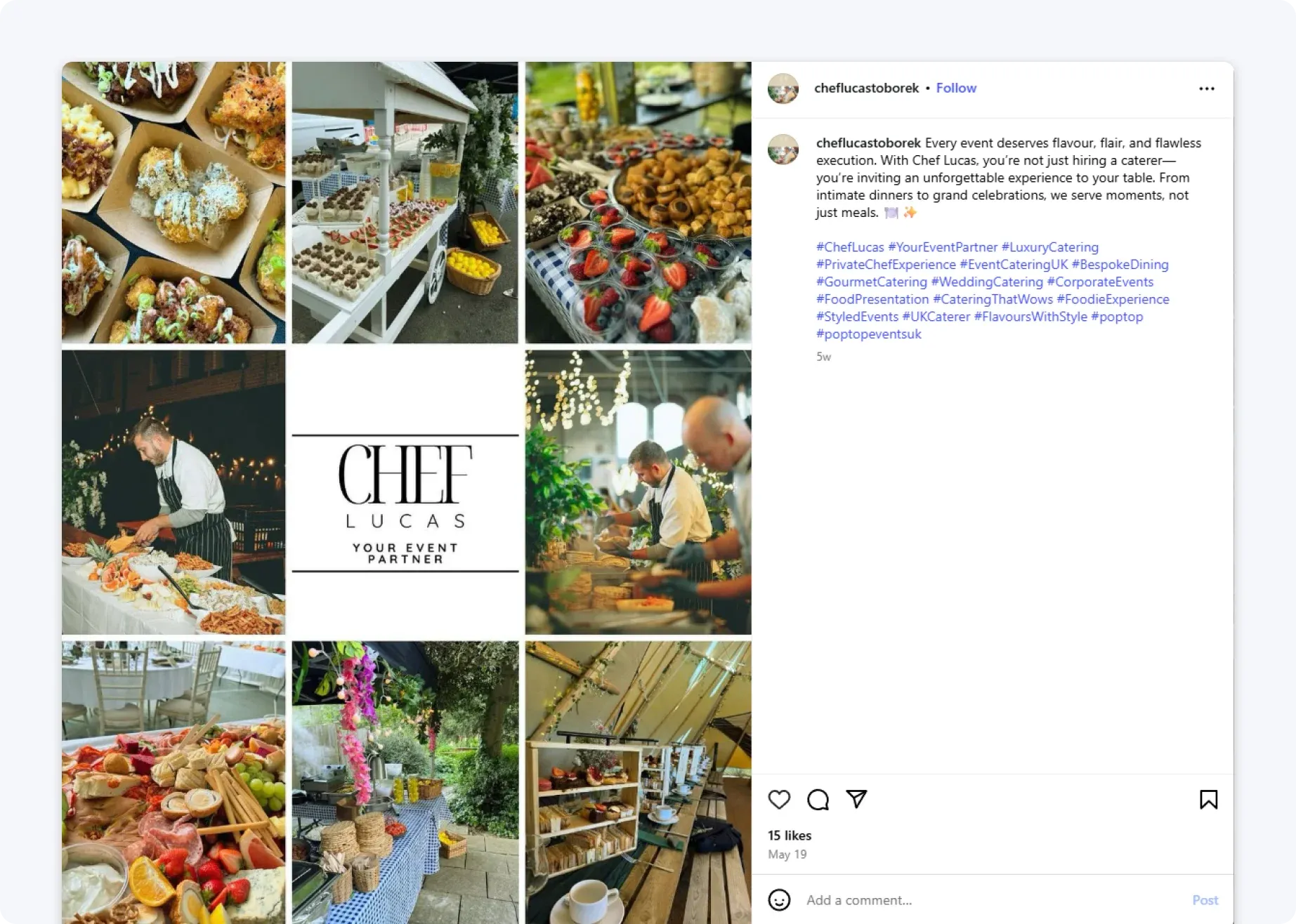
3. Partnerships
Build relationships with businesses that share your customers. For example, wedding photographers, party suppliers, corporate event organisers or office managers might refer you.
If you can reliably service, say, corporate lunches, contact local HR departments.
Similarly, churches, schools and charities often need occasional catering – meet local organisers or join community business networks.
Operations and capabilities
On a typical event day, things kick off early. You might start with final menu checks, ingredient prep (like chopping, marinating, and pre-cooking), and packing hot or cold food for transport. Once at the venue, you’ll set up your service area, coordinate with the client or venue staff on timing, serve guests, and then clean up afterwards.
Behind the scenes, there’s plenty more going on:
- Ordering supplies and managing inventory
- Maintaining kitchen equipment and your vehicle
- Scheduling jobs and avoiding double bookings
- Logging food temperatures and cleaning routines for compliance
Skills that keep everything running
While cooking is at the heart of it, successful caterers rely on a broader set of skills:
- Time management – Events run on strict schedules, and delays can snowball.
- Attention to detail – Especially with dietary needs, portion sizes, and presentation.
- Customer service – You’ll often deal directly with clients and their guests.
- Communication – From explaining the menu to delegating tasks to staff.
- Teamwork – Even if you start solo, bigger jobs will require help.
It’s also worth acquiring some basic business skills, such as pricing jobs, negotiating with suppliers, and performing basic accounting tasks. These can make a huge difference to your margins.
Solo or with a team?
Many caterers start small, working alone or with a helper (often a spouse or friend). As your client list grows, you might:
- Hire part-time staff for prep or service
- Use agency waitstaff for large events
- Build a trusted team of kitchen hands and servers over time
Hiring too soon can eat into profits, but waiting too long can lead to burnout. The key is to scale gradually and flexibly.
Time-saving systems and tools for catering businesses
| System or Tool | Purpose |
| Standardised recipes and portion guides | Ensures consistency in taste, portion sizes, and cost control |
| Supplier contact list | Speeds up ordering and helps manage reliable ingredient sources |
| Event checklists | Keeps setup, prep, and service organized and prevents last-minute mistakes |
| Shared booking calendar | Helps manage multiple events and avoid double bookings |
| Weekly routines (cleaning, restocking, admin) | Maintains hygiene standards and keeps inventory and finances on track |
| Insulated food carriers | Keeps food at safe temperatures during transport |
| Portable serving tables/stations | Allows flexible setup at different venues |
| Reliable transport vehicle | Ensures timely delivery of food and equipment |
| Commercial dishwasher | Saves time on cleanup and improves hygiene standards |
Tools, systems and automations
Good tools can make the paperwork side of catering far easier. For administration and finances, many small businesses use accounting software or apps. ANNA’s business account is one such tool that does more than banking — it integrates invoicing, expenses, and bookkeeping all in one mobile app.
For example, ANNA lets you create a quote, send an invoice, and even share a payment link or QR code so clients can pay instantly. It will also automatically chase unpaid invoices. Alternatively, popular accounting packages like Xero or QuickBooks work well, and ANNA can sync with them if you prefer.
Taking payments and handling cash
If you’re taking payments on the spot — for example, at a market stall or event — a card reader like SumUp or iZettle is useful. ANNA’s account also supports paying in cash at many retailers, which is handy if you take physical payments or need to make supplier purchases in person.
Organising bookings and client info
On the admin side, consider using online forms for enquiries or event questionnaires.
A Google Form or a booking plugin on your website can collect useful client information — guest numbers, dietary needs, event dates — and automatically populate a spreadsheet. This saves you time retyping, reduces errors, and keeps everything in one place.
ANNA’s receipt capture feature is also handy. Just snap a photo of each purchase invoice or expense, and the app automatically matches it to your bank transaction. That means no more shoebox of receipts or manual data entry to stress over.
Automating key admin tasks
Simple automations can save you hours each week. Set up automatic email reminders for following up on quotes or confirming event details. Even basic tools like Gmail allow you to schedule emails, while platforms like Buffer or Hootsuite can help you plan and schedule social media posts to keep your profiles active without needing to log in every day.
If you file VAT or taxes, software really helps here too. ANNA’s Taxes+ add-on (a low-cost extra) will calculate VAT, prepare returns, and even file them to HMRC for you. This “accountant in your pocket” feature can save you hours of number crunching and late-night admin.
Example: 1-year business plan snapshot
To make this concrete, here’s a simplified snapshot of what your first year might look like:
| Timeframe | Key Activities | Objectives & Milestones | Notes / Considerations |
| Months 1–3 | - Register the business (e.g., via ANNA)- Obtain necessary licenses and permits- Purchase key equipment- Set up kitchen/base- Finalise initial menu and pricing by test-cooking- Create simple website or brochure- Build local network (wedding fairs, networking events, social media launch)- Book pilot events at low cost (family/community) | - Business officially launched- Menu and pricing tested and finalised- First pilot events completed- Initial local contacts and brand awareness established | Budget for licenses, equipment, website hosting, and marketing materialsFocus on compliance and quality testing |
| Months 4–6 | - Increase marketing efforts- Attend larger local events with stall or sponsorship- Send quotes to leads (weddings, corporate)- Book and deliver first paying events- Collect customer feedback and photos | - First paying customers secured- Positive feedback and testimonials gathered- Steady schedule of occasional jobs- Aim to break even on startup costs by month 6 | Track income and expenses carefullyUse feedback to refine service and menuInvest in marketing channels that show results |
| Months 7–12 | - Leverage testimonials and photos for marketing (website, social media)- Expand offerings (e.g., party platters, seasonal menus)- Target steady regular clients (businesses, schools)- Set targets: number of events (e.g., 20+), revenue goals, hire part-time staff if needed- Plan for year 2 growth (more equipment, second food van) | - Business growth and consolidation- Achieve profitability- Build a regular client base- Meet or exceed financial and operational targets | Monitor customer demand and adjust capacityPlan staffing and equipment investments carefullyMaintain high service standards |
Final tips and common mistakes
Here are some do’s and don’ts distilled from experienced caterers’ advice:
- Do build in headroom: Always buy or prep more food than you expect to serve. It’s better to have a bit extra (or return unused leftovers) than run out mid-event. Caterers typically plan 10–15% extra. Likewise, budget more time than you think you need for prep and travel.
- Don’t underestimate costs: Factor in all your expenses – gas for your van, utilities, waste disposal, serving staff pay, cleaning materials, insurance, and even business taxes – when setting prices. Many new caterers make money on paper but forget these hidden costs. Use simple bookkeeping from day one (ANNA can automate it) so you always know your actual profit.
- Do focus on hygiene and safety: Never cut corners on food safety. Keep your kitchen spotless, get your team certified (Level 2 Food Hygiene is a minimum), and strictly follow allergen laws (e.g. Natasha’s Law for pre-packed foods). Public health is paramount; a bad EHO report or food-poisoning incident can ruin your reputation.
- Don’t ignore contracts and deposits: Always put your agreements in writing. A signed contract should cover menu, date/time, guest count, pricing and cancellation terms. Take a deposit (e.g. 25–50%) at booking to secure the event. This protects you from no-shows or late cancellations. Clear paperwork also reassures customers and prevents misunderstandings about what was agreed.
- Do specialise, at least initially: Focus on a few types of events you do very well, rather than trying to serve every market. For example, you might start with just weddings and parties, or just corporate lunches. This allows you to streamline your menu and service for those clients. As you gain confidence and resources, you can diversify.
- Do get feedback: After each event, ask your client what went well and what could improve. Use this to refine your service. Also encourage online reviews – a positive Google or Facebook review is a powerful marketing asset.
Why ANNA works for new caterers
ANNA lets you register your company for free and open a business account in minutes—so you can focus on food, not forms. The app sorts your transactions, tracks expenses, and creates quotes and invoices with payment links or QR codes. It also keeps HMRC-compliant records and can handle VAT and tax filings if you add the Taxes+ feature.
It’s a simple, all-in-one setup for banking, invoicing, and staying on top of compliance – ideal for busy caterers getting started.
Try ANNA today and get your catering business up and running with less admin and more time in the kitchen.
Read the latest updates
You may also like
Open a business account in minutes
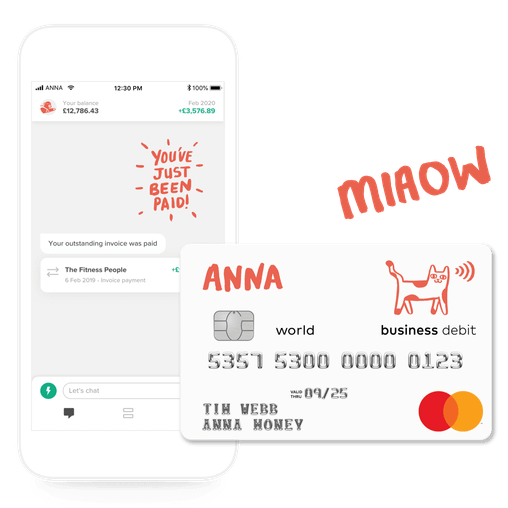



![How to Start a Currency Exchange Business in the UK [Guide]](https://storage.googleapis.com/anna-website-cms-prod/medium_Cover_3000_Landscaping_Business_Names_Creative_Name_Ideas_daad2f9e2a/medium_Cover_3000_Landscaping_Business_Names_Creative_Name_Ideas_daad2f9e2a.webp)


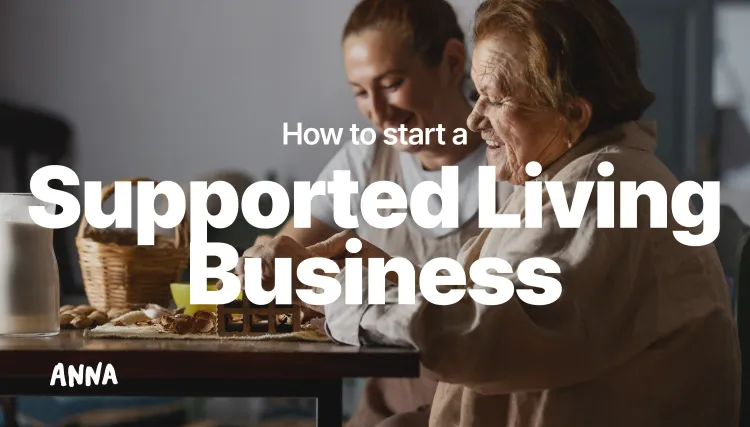

![140 Creative Tutoring Business Names [Ideas & Examples]](https://storage.googleapis.com/anna-website-cms-prod/medium_Cover_3000_Landscaping_Business_Names_Creative_Name_Ideas_d7964059b3/medium_Cover_3000_Landscaping_Business_Names_Creative_Name_Ideas_d7964059b3.webp)

![How to Start a Self-Employed Business in the UK [Guide]](https://storage.googleapis.com/anna-website-cms-prod/medium_Cover_3000_Landscaping_Business_Names_Creative_Name_Ideas_fe5b6edef1/medium_Cover_3000_Landscaping_Business_Names_Creative_Name_Ideas_fe5b6edef1.webp)
![How to Start an Electrician Business in the UK [Guide]](https://storage.googleapis.com/anna-website-cms-prod/medium_Cover_3000_How_to_Start_a_Car_Detailing_Business_Successfully_74488a6268/medium_Cover_3000_How_to_Start_a_Car_Detailing_Business_Successfully_74488a6268.webp)
![How to Start a Hoodie Business in 2026 [Full Guide]](https://storage.googleapis.com/anna-website-cms-prod/medium_Cover_3000_How_to_Start_a_Hoodie_Business_in_2025_Guide_17060b578d/medium_Cover_3000_How_to_Start_a_Hoodie_Business_in_2025_Guide_17060b578d.webp)
![How to Start a Graphic Design Business in 2026 [Full Guide]](https://storage.googleapis.com/anna-website-cms-prod/medium_Cover_3000_How_to_Start_a_Graphic_Design_Business_in_2025_d8d412cdf5/medium_Cover_3000_How_to_Start_a_Graphic_Design_Business_in_2025_d8d412cdf5.webp)
![How to Start a Video Editing Business in 2026 [Full Guide]](https://storage.googleapis.com/anna-website-cms-prod/medium_Cover_3000_How_to_Start_a_Video_Editing_Business_in_2025_bf1c6865ee/medium_Cover_3000_How_to_Start_a_Video_Editing_Business_in_2025_bf1c6865ee.webp)
![How to Start an Event Planning Business [Full UK Guide]](https://storage.googleapis.com/anna-website-cms-prod/medium_Cover_3000_How_to_Start_an_Event_Planning_Business_in_the_UK_9e78d91fa0/medium_Cover_3000_How_to_Start_an_Event_Planning_Business_in_the_UK_9e78d91fa0.webp)
![How to Start a Bakery Business in the UK [2026 Guide]](https://storage.googleapis.com/anna-website-cms-prod/medium_Cover_3000_How_to_Start_a_Copywriting_Business_from_Scratch_e47ea6b2a6/medium_Cover_3000_How_to_Start_a_Copywriting_Business_from_Scratch_e47ea6b2a6.webp)






![How to Start a Copywriting Business from Scratch? [Guide]](https://storage.googleapis.com/anna-website-cms-prod/medium_Cover_3000_How_to_Start_a_Copywriting_Business_from_Scratch_cf3c4d7190/medium_Cover_3000_How_to_Start_a_Copywriting_Business_from_Scratch_cf3c4d7190.webp)

